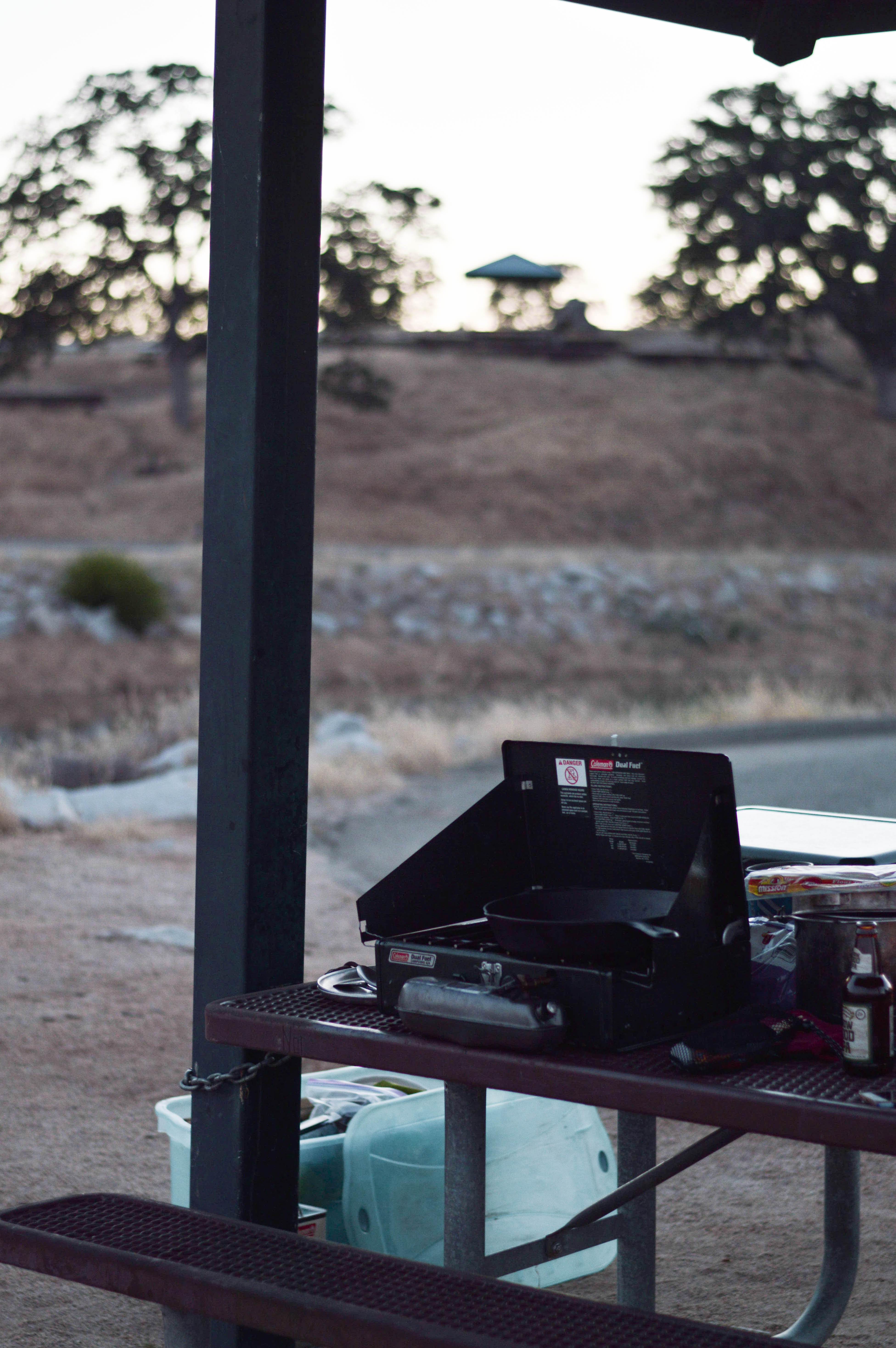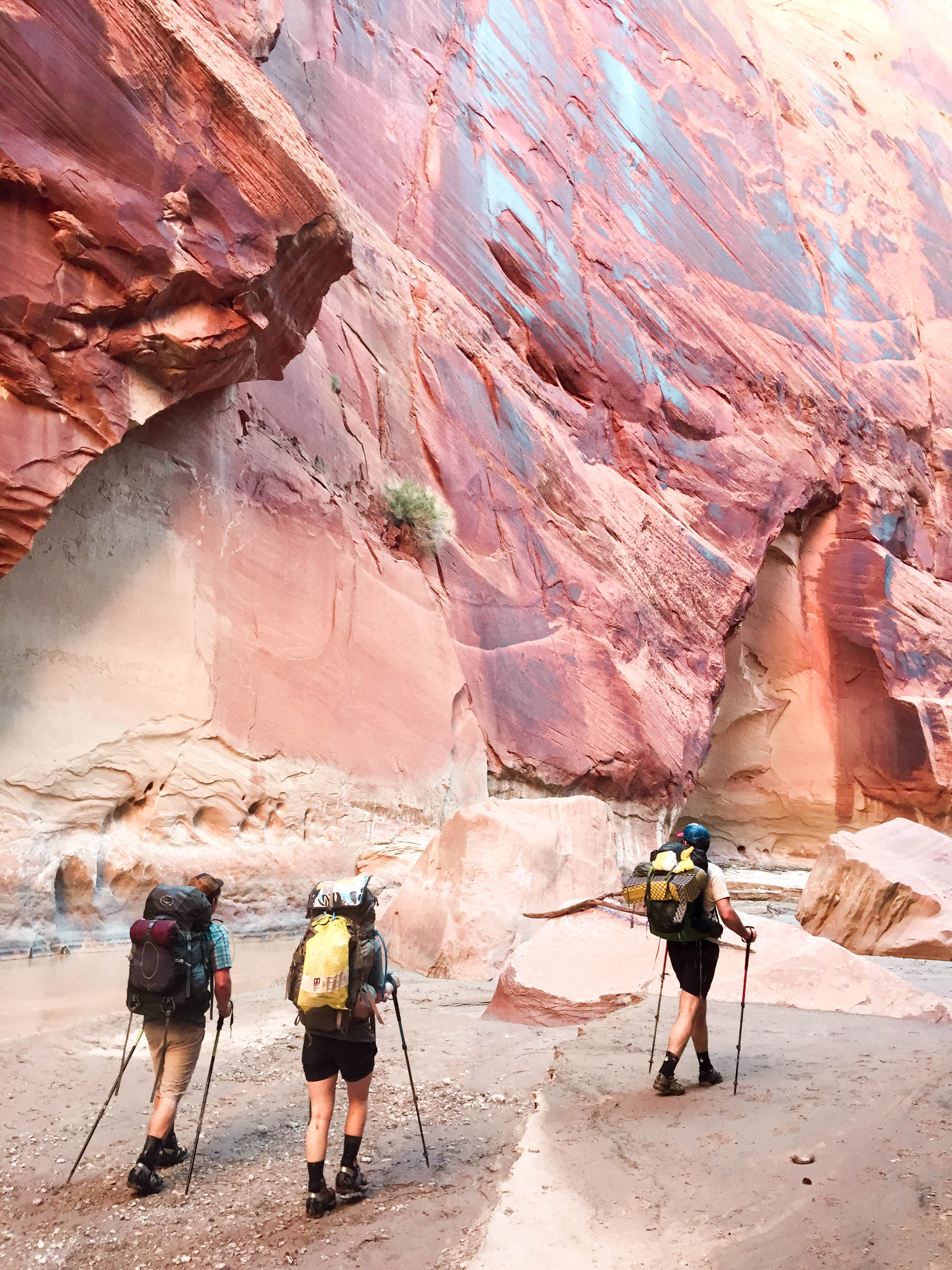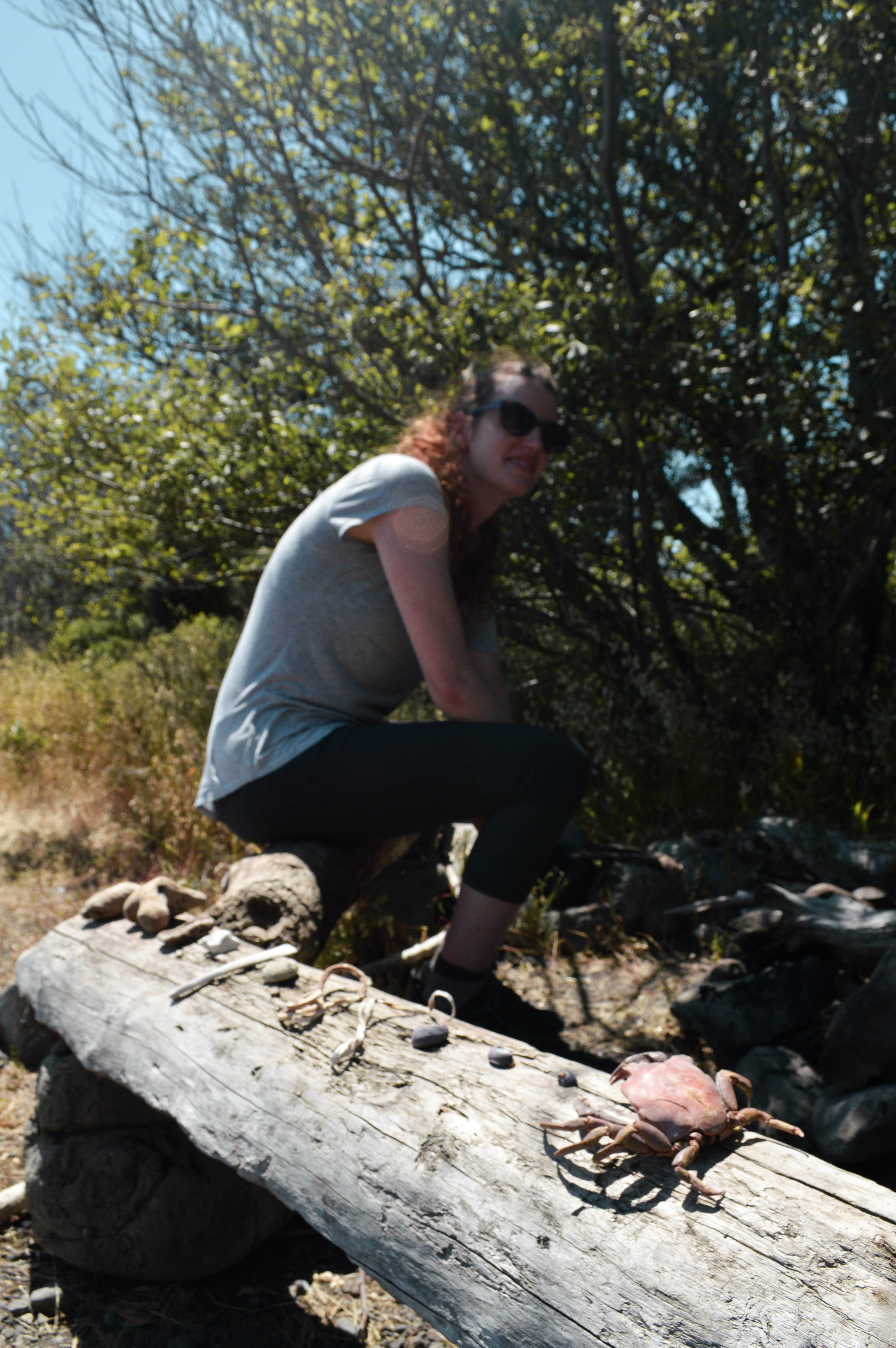
The camping season is upon us! I am stoked to get out and enjoy nature by both car camping and backpacking this summer. And while I’d like to think of myself as an experienced outdoors person I know I could always use a few reminders about taking care of the outdoors.
No matter if you have spent a ton of time in the backcountry or are going on your first camping trip this summer, knowing (and remembering) the Leave No Trace Principles is an important part of getting outside.
Whether we like it or not all of our actions outside affect the environment in one way or another, it’s not just about remembering to pick up your trash. Where you walk, set up camp, and even how loud you are have an affect on the natural world, from the tiny plants growing in the ground to birds and animals whose home we are enjoying.

Leave No Trace principles are guidelines to help keep minimize our impact and help keep nature enjoyable for everyone.
The 7 Leave No Trace Principles:
Plan ahead and prepare
This seems like a given but you’d be surprised how often we forget to check the weather, trail conditions, or fire restrictions before heading off on a hike or camping trip. I’ve definitely fall prey to the habit of thinking “oh we went camping here last memorial day and it was warm and great – so of course it will be warm and sunny again”. Weather changes, it’s not the same at the same time year to year and not being prepared for rain or wind or snow or extreme heat really sucks.
Aside from weather and general trail and campground conditions, it’s important to do your research to know what you’ll need for your trip. Backpacking in the Sierras versus backpacking in desert slot canyons require a few very different things so you need to pack accordingly.
The first few times I went camping and hadn’t really filled out my full “car camping kit” and it was very apparent the things I was missing. Going to cook dinner and I realized I didn’t have a kitchen knife was a bummer – side note, cutting up veggies with a pocket knife is challenging.


Travel and camp on durable surfaces
This is a fancy way of saying hike on trail and camp in established camp spots. Don’t go off trail, don’t crush flowers and grass, don’t advance erosion down a hillside because you want to cut a corner. It’s not cool. And just because you don’t see any obvious plants to crush by going off trail doesn’t mean they’re not there. Cryptobiotic soil might not look like anything but dirt or sand but it’s a whole ecosystem unto itself and plays a huge role in the larger ecosystems around it.
By staying on the trail you’ll let all the flora and fauna around the trail thrive for a more beautiful hiking experience.
When car camping you kind of have to be in established campsites since that’s kind of what car camping is. However when backpacking the rules are a little looser. While it might be tempting to throw your stuff down anywhere at the end of a long day of hiking you should really be setting up camp in areas that have been established for camping. That means the ground is hard and packed down, the brush and vegetation has been cleared, and sometimes there’s even a few amenities like a fire pit, logs to sit on, or a bear box (gasp! What luxury!).



Dispose of waste properly
If you brought it in you need to take it out. In car camping campgrounds that means putting all your trash into the dumpsters including food waste. Just because it’s natural or organic matter doesn’t mean it’ll just disappear if you throw it on the ground. A banana peel can take up to two years to decompose depending on the environment of the trail it gets left on!
For hiking and backpacking all food and garbage needs to be packed out with you so remember to bring trash bags, I like to use big ziplocks to help with smell and spills.
There are certain trails and parts of trails where, how do I say this delicately? You have to pack everything out, like all food waste, like poop. When you are hiking somewhere like the Narrows in Zion you are literally in the river most of the time so getting 200 feet from the water to go to the bathroom isn’t really an option. Same rules apply for places where you can’t dig a hole, like when hiking Mount Whitney. There ain’t no way you’re digging into that granite sooooo. Luckily backpacking technology has provided us with the “poop bag”, a handy little set up that makes you feel like a cat in a litter box. But it does the job, blocks smells and looks discreet enough.


Leave what you find
Nature is rad and you’ll find some awesome stuff out there, but leave it for everyone to enjoy.
When I was about five my family went on vacation on the Big Island of Hawaii. One day we went to Volcanoes National Park, I was cruising around like the hyper five year old I was when I found a particularly awesome looking lava rock. My mom noticed I’d picked it up and told me “you can’t take it or you’ll anger the Volcano God Pele”. I was a willful child so I ignored her and put the rock in my pocket and as I began to wander away smoke erupted from Kilauea. Needless to say it scared the pants off me and I diligently put the rock back where I found it.
So the moral of the story is leave nature where it is or risk the wrath of the gods.


Minimize campfire impact
Being from California I know how destructive wildfire can be, forest fires are no joke here. So the first thing you want to do is check if there are any fire restrictions for where you are camping. Depending on the season and the weather you might not be able to build a fire even if there is an established fire ring.
If you are camping in a campground with a metal fire pit there generally aren’t restrictions for building fires. However there’s no need to build a giant bonfire that could potentially get out of control. Keep your campfires reasonable, they’ll still keep you warm and toast your marshmallows, and they’ll be easier to put out at the end of the night.
While backpacking make sure you check to see if there are any fire restrictions, a lot of times you can have fires on some parts of the trail and not others. Like on the John Muir Trail fires are allowed below 10,000 feet but not above. When setting up camp only make a fire if you have an established fire ring, if there isn’t one already there don’t make a new one.
What all of this is essentially saying is that fires are good and warm but only make them in designated areas and follow the rules for if you can have them or not.


Respect wildlife
I’ve heard lately that a few national parks are having this issue of people trying to take selfies with bears. A lot about that seems crazy right? Who wants to get close enough to a bear to take a selfie?!? But it happens and in the moment when you see a bear they’re super cute so heck yeah let’s take a photo! But the thing we forget is that they’re animals and we are in their home. You’d be pissed if someone came into your house and tried to take a selfie with you right?
Aside from the fact that a bear could rip your face off for getting to close, it’s another being that deserves respect as do all the animals out there big and small. So admire from afar but don’t get close or interact.


Be considerate of other visitors
The outdoors is a wonderful place to get away, but don’t think that you are the only one with that idea. Everyone deserves the chance to get outside and enjoy nature and a lot of people do take advantage of all of our wild spaces. So just be a considerate human.
I was camping once and someone in the campground had an electric guitar plugged into an amp and was playing at night. It’s not terrible but this person also seemed to be a beginner and was plunking out scales and chords in a repetition = practice sort of fashion. And while I am all for anyone learning to play an instrument, the whole campground doesn’t need to listen to you learn scales all night. Hey at least it wasn’t the violin I guess…


I know these sound like “rules for the outdoors”, but I say they are guidelines because you need to adapt them to your situation. They are things to think about to keep our natural spaces as natural as they can be.
And while there is no such thing as “pristine wilderness”, natives had been living on much of the areas that we now camp for generations, trying to minimize our impact is important for letting the land be used and enjoyed for future generations.

So when you are out in the wild world this summer just keep these principles in mind as a sort of best practices for the outdoors.
READ MORE:
Backpacking 101: Clothes
Backpacking 101: Gear
How to go Camping Without a Reservation
3 Tips for Fall Camping in California
Like this post? Pin it!




Pingback: How To Go Camping Without A Reservation - Nattie on the Road
Pingback: Backpacking the Lost Coast Trail - Nattie on the Road
Pingback: Hiking the Skyline to Sea Trail - Nattie on the Road
Pingback: 3 Tips for Fall Camping in California - Nattie on the Road
this is a beautiful pic we can see an astonishing view in tis pic with the anormous mountains and natural greenry
This pic is very beautiful
Insightful and engaging post! Your practical tips on Leave No Trace principles make outdoor ethics accessible and actionable for all adventurers.